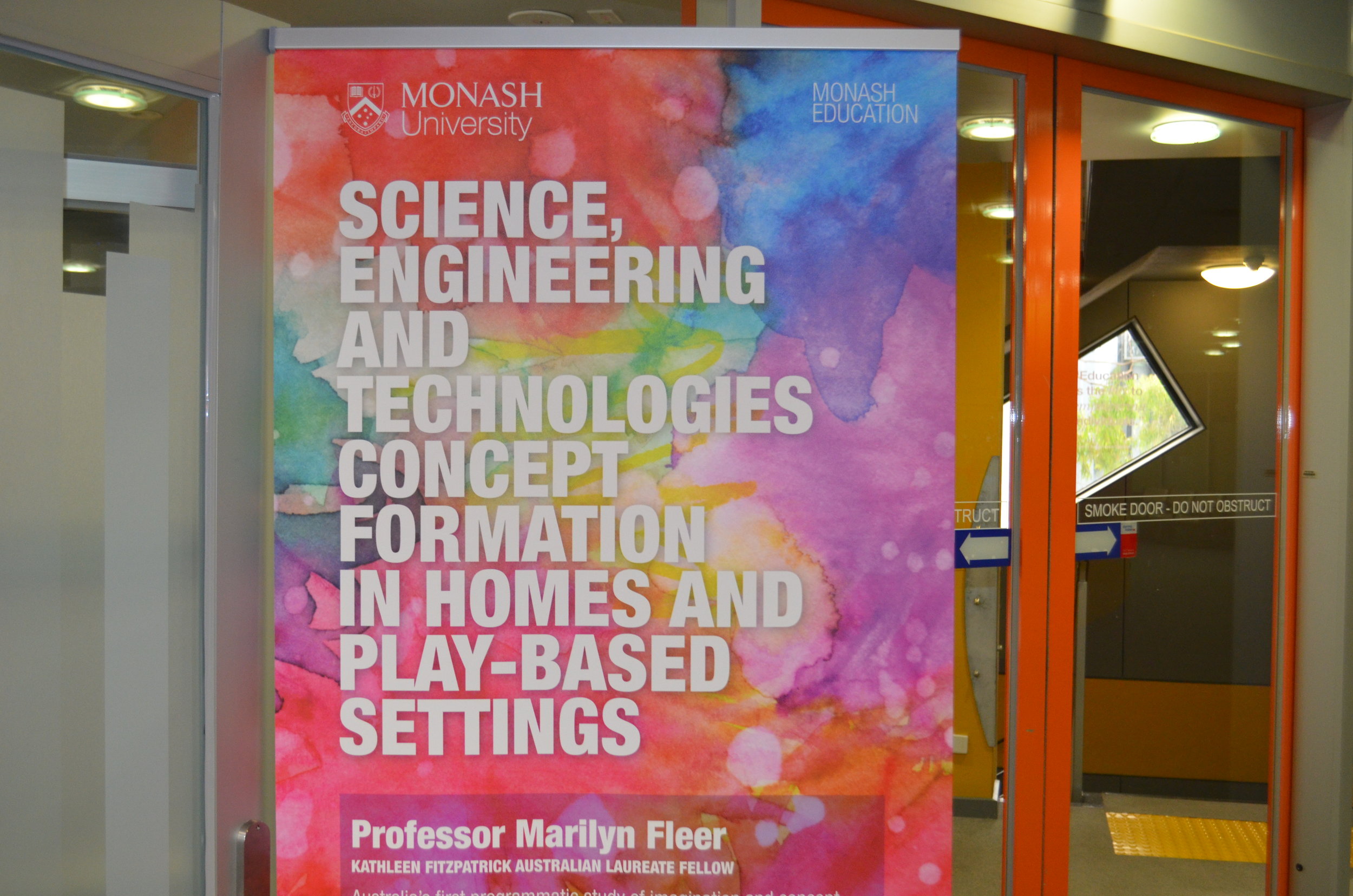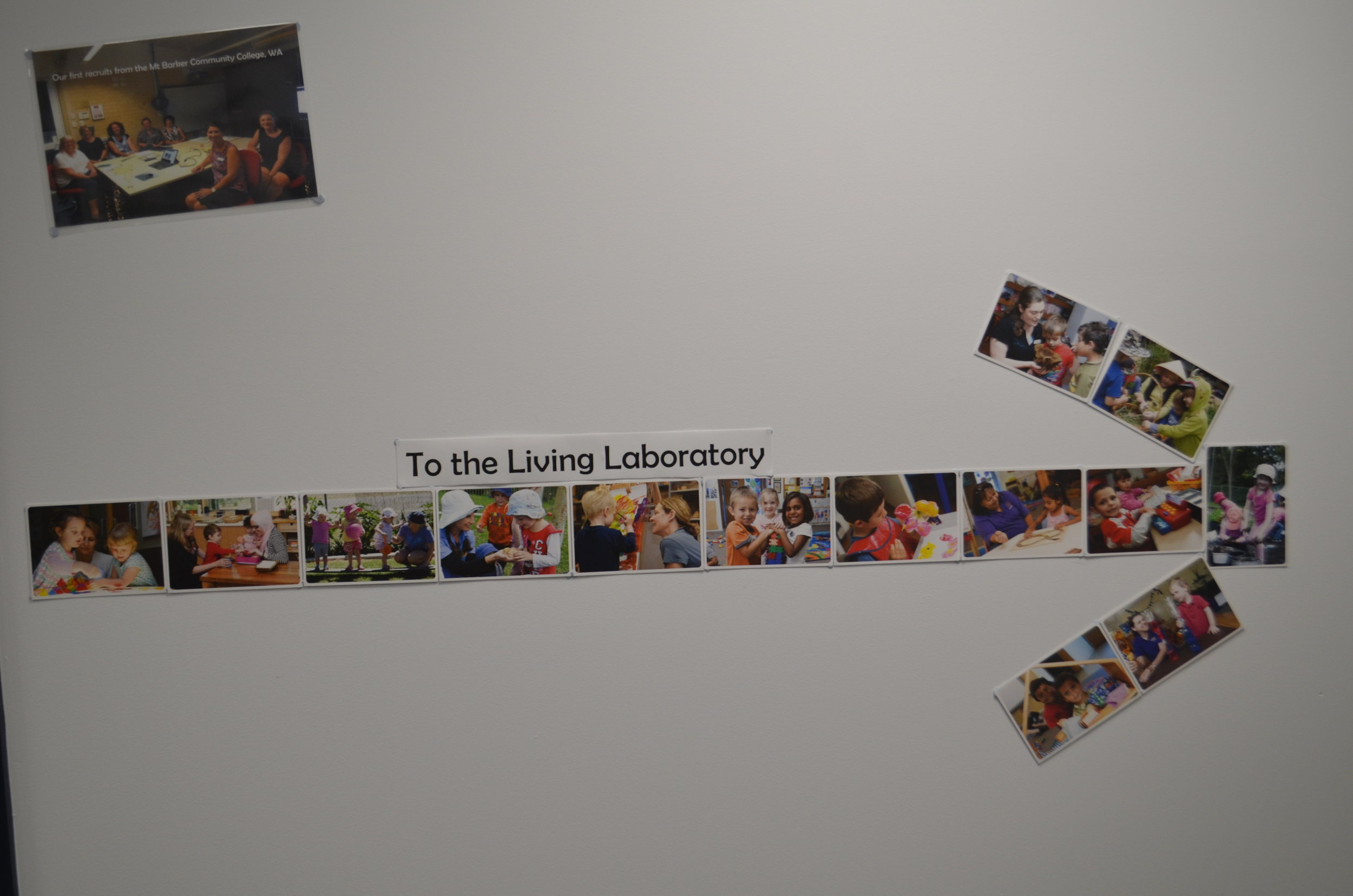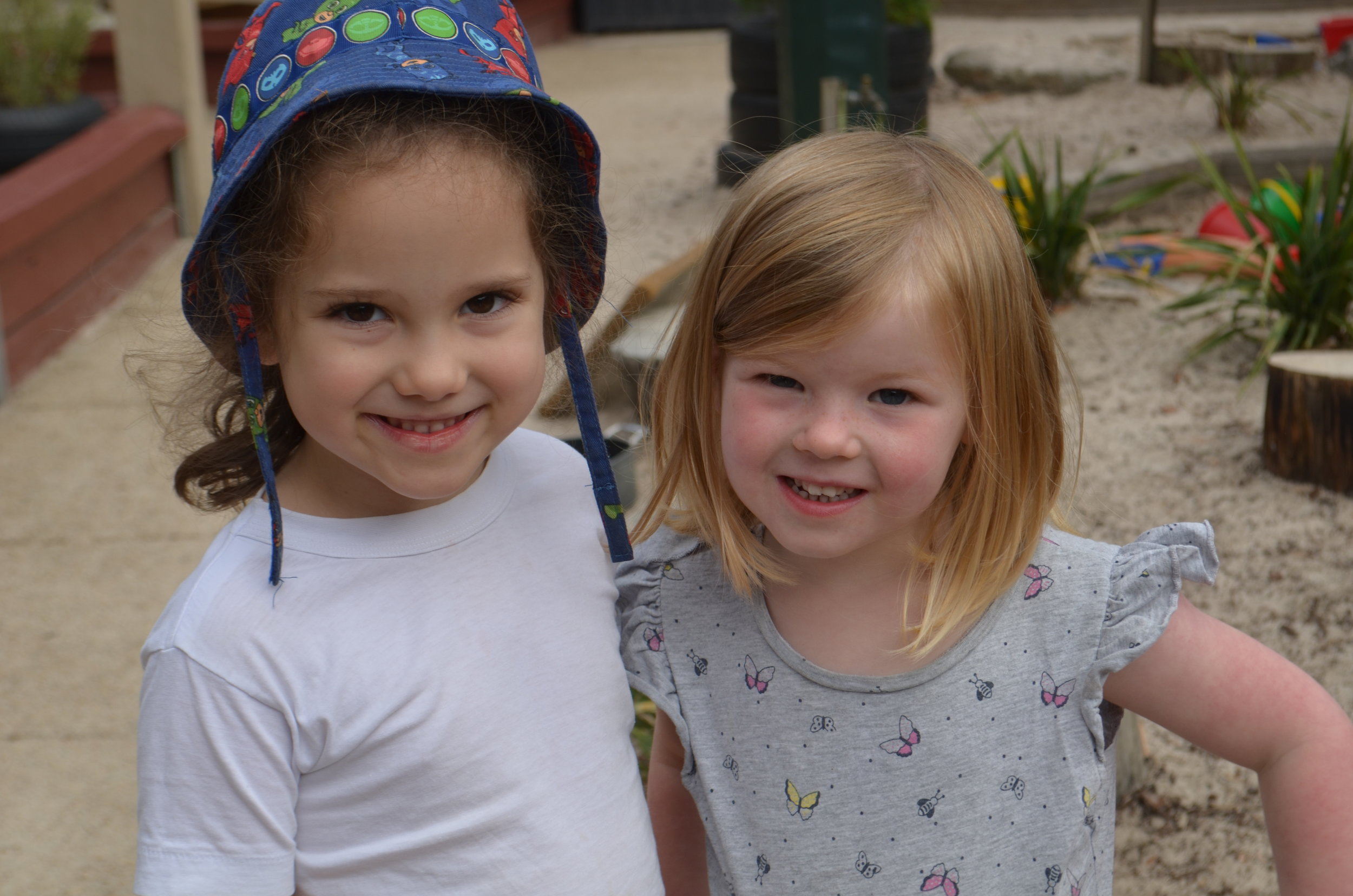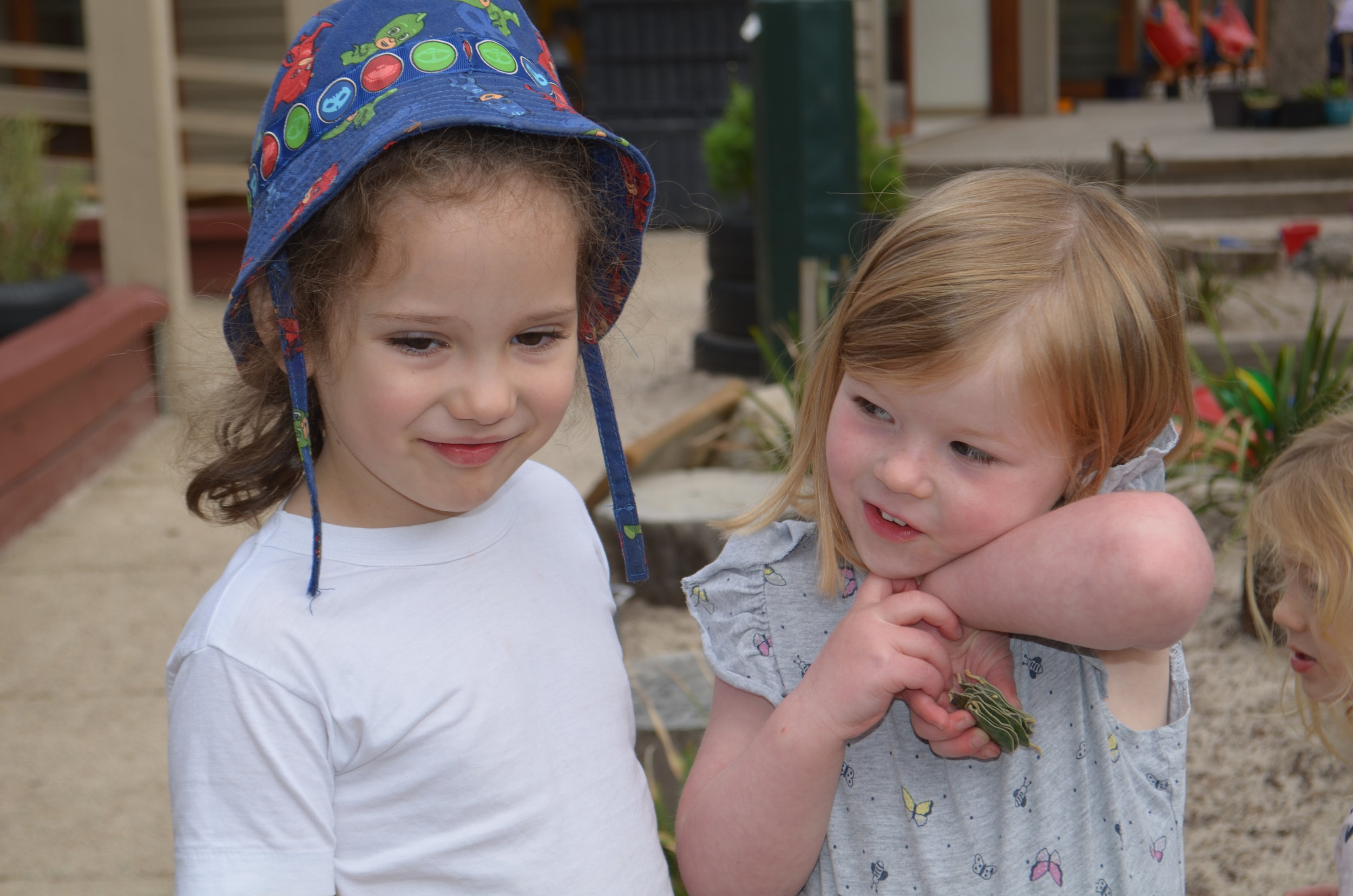There’s more At Play
Australian Laureate Leads Ground-breaking Early Years Research
The Monash University Peninsula campus is quiet. A few students idly make their way through the grounds. Green eucalypts dance in the cool autumnal breeze. Birds tweet and frolic through the branches overhead. They are playing. Part of which informs the studies going on within.
Play is not only for the birds, but it informs our learning. In what ways, studies show.
In an unusual turn of events, an early childhood Professor won the Kathleen Fitzpatrick Australian Laureate Fellowship last year. An award often bestowed to the physics, law, medicine or engineering faculties. Early childhood often falls into the shadows, the idea of ‘play’ an aside. It is not something that has been highly revered in academic circles by and large, but this is changing.
“There are few in the humanities, not a lot, but mostly in the hardcore science area, law and so on, to have won this award. In the context of all those people says, this is really important work in early childhood. This is kind of like a symbol of how important we are in early childhood education.”
This is Professor Marilyn Fleer speaking from her treetop office, still beaming after the Laureate accolade. Fleer is working towards breaking down some preconceived notions that depict the early years in a certain light.
“When I started my academic career there was no resources, no research funding for early childhood. We didn’t even exist as a category within the Australian Research Council,” said the Laureate winner.
“Back then we just were invisible so it had everything against it. This is fantastic because it is the first Laureate Fellowship for early childhood ever. Ever in Australia. It is only the second one in education. The first one in education was in 2010.”
“Early childhood education has always been, across the board, playgroups, family day care, childcare, preschool, early years of school, all of that has always been undervalued because over the years, it has primarily been women’s business and so it has always been poorly paid, poorly resourced and it flows through to academia as well.”
Nordic countries such as Finland are shifting the focus, putting play as a priority in their education curriculum. Research is building. Play in the early years of one’s life is foundational. The experiences and learning through play inform future learning abilities and indeed in many ways it has the ability to impact the makeup of our society.
The percentage of women taking science, technology, engineering and mathematics subjects is low. Professional Fleer recognizes how STEM comes to life in early childhood play. STEM is part of a child’s inquiring mind, their eagerness to know more. Children want nothing more than to be involved and engaged. Fleer has seen this firsthand as an educator and knows the intricacies through her role as an academic- the link between brain, action, and learning- conducted through research and years of continued observation as a kindergarten teacher.
Fleer now has garnered one of the biggest early years grants in history. A whopping 3.2 million has been funded from the Australian Research Council. With this money, an army of enthusiastic researchers and academics prepare. The Conceptual PlayLab has sprung to life at the peninsula campus. The next five years will be an in-depth study on the very detail of childhood. Of play. Of STEM, focusing on ‘Imagination in play and imagination in STEM’.
“It is really, really special. I feel the responsibility but it is so exciting because I have resources, in the name of people. The funding is primarily to pay people, to do this really interesting work around science, engineering and technologies for infants, toddlers and preschoolers across a broad range of settings and across different cultures, families and communities.”
Marilyn has tenacity about her, a verve, a good sense of humour. A daughter of immigrants, who grew up in a poor farming community, who did not speak English at home, Marilyn rallied.
“Everything in my background would suggest that I should not succeed.”
She describes winning the Laureate as “like winning a gold medal, it is just unbelievable, like winning the noble prize for academia in Australia.”
Fleer recognises the significance of the award, the privilege. She also knows the merit of the work being done and holds strong that this is a recognition well worth its weight in gold and awards. The early years is where we all start our lives, after all.
Fleer received an award for the highest-ranking female.
“So I am going, yes! This gives me permission- because it is still very much women’s business, even though it should be everyone’s business.”
“I am really, really keen to use this fellowship to reposition early childhood education as important. That is generally and that is a goal- but also specifically in relation to the sciences and to say- actually, it all begins here. If engineers Australia are worried about having only 12 per cent of your workforce female, then look at what we are doing here, because this is where is begins and you can actually see it from my previous research, we can actually see why this really matters. If you want girls to be engineers, then you’ve got to look at what that looks like and nurture it and invest in it.”
Fleer never went to early childcare, kindergarten or playgroup or anything like that herself.
“My family was just focused on survival.”
She struggled to read and guesses that maybe that is why she has been interested in science, technology and engineering: “because the language of that is quite clipped and short, it is not verbose as we have in journalism and literature, so I felt I could enter into reading that way.”
Fleer doesn’t talk about STEM in a way that puts so many people off. She talks about STEM and all you hear is opportunity, innovation and exploration.
“We know from our research that play and the development of play, children’s play, develops their imagination. A child takes a stick, turns it into a hobby horse and is imagining being a horse rider can change the meaning of an object, and when they get to school they take a stick, they call it a ruler and they get into their imaginary world of measurement- big ideas and mathematics- to be able to measure means you can do all sorts of amazing things, working with concepts. It’s the same thing, the development of imagination and so, if what we do is remove that capacity to play, imagine and have thought experiments which is the sort of thing that famous scientists did like Einstein or Barbara McClintock.”
“McClintock changed the course of genetics. We want these kinds of women and men who change our life forever because of their capacity to have thought experiments, to imagine themselves going down into the microscope and to examine the petri dish and to think about genetics in a whole new way. People laughed at her at the time but her work changed the course of everything we do in genetics so she is the foundation rock of all this new thinking.”
Fleer speaks of the ‘mass hysteria’ that encircles screen time- she thinks there should be a stronger focus on the quality of screen time, because the interaction between children and families and the screen bring new ways of thinking when used in productive ways.
“We know from all of our research, that very young children have these inquiring minds who want to find out about things, and want to learn about things, and want to engage in the real world. When they are very young and they don’t have the language to express what they want, or they cannot necessarily read to get the information they need at the moment when solving a problem, digital devices for instance, mobile digital devices, actually provide children with the ability to do these things than; it becomes like an auxiliary device to give children access to things they couldn’t do before.”
In the ‘Play-World’ Model that Fleer has adapted, technology aids the play. For instance, when teachers read a book, such as Rosie’s Walk by Pat Hutchins, and then bring the story to life with puppets, objects and tangible things, then it is possible to use a digital device to amplify the excitement of the story [1]. For instance, in the background Fleer is playing fox sounds on her phone which children respond to animatedly. Later a problem arises, they receive a message on her phone from a chicken needing directions to Rosie’s farm, they then look at maps using Google Maps, and try and help her find her way. It is role playing, it is fantasy, it is play and learning.
“It was an engaging moment – to help the chicken find Rosie’s farm, to hear the fox sounds, and to use Google Maps to solve the problem. You’re going beyond the story, creating a problem.”
Fleer adapts this to different play spaces and enjoys seeing how engaged the children are, and indeed the educators, too.
“When they were looking at these maps is was a beautiful, chaotic moment.”
Around the world, play is beginning to take precedence. Monash is running a project in China and several other Asia pacific countries. Hong Kong now has a curriculum called the Playful curriculum because they don’t want formal learning in the way that they have before.
“They want their citizens to graduate from kindergarten and school to be innovative, creative, to have the 21st century skills of imaging and being able to conceptualise and invent things that we haven’t thought of. To be able to do that you need imagination.
“Imaginative play and imaginative STEM are really important to those countries and they are changing their curriculum. They are working with their educators.”
So too with countries like Sweden, Norway, Finland and Denmark, play is integrated into the curriculum and forest schools are taking off in the early years.
Research in the UK and New Zealand showcases how early experiences impact life opportunities later on. Fleer cites the US, having done a cost benefit analysis about reduced incarcerations, owning a second car and owning your own house- if you have a quality early experience. Lots of studies are making this link.
“So there’s all this research out there and what’s happened is that the Organisation for Economic Co-operation and Development (OECD) has put out a number of ‘starting strong’ reports over time, that have documented this in relation to policy and governments that are involved in the OECD and more broadly have paid attention to this so they have started to invest more in early childhood.”
“That has been the change but what has come with that in recent times is that there are some governments now who say, ‘we have put more money into early childhood we want to see greater outcomes’. What we are noticing internationally, in the northern hemisphere countries primarily is, a push down of a schoolification of early childhood.”
This follows the thought that rote learning and structured learning outweigh play and imaginative play-based learning. People have created kits of learning, designed to measure certain things.
“You don’t measure imagination, creativity or innovation, you just measure outcomes and literacy and numeracy for instance.”
“When this starts to happen, internationally, a sort of northern hemisphere countries, it starts to put early childhood education and families into a very difficult position because then you start to get homework and so on. This pressure is a problem because we know from our research that play and the development of play, helps develops children’s imagination.”
“We know there has to be some sort of balance in the middle. Our conceptual Play-World is a model that speaks to both of those agendas in a way that values and respects the fantastic work that families and early childhood educators already do really well.”
The research already underway is building on the strengths of play and STEM, using technology to benefit the learning process. The play world provides educators with a tool to do that.
“That’s why the work we are doing in the Conceptual PlayLab with our conceptual Play-World is a model that embraces and nourishes the development of children’s play but at the same time they also use concepts to enrich their play. As they encounter problems they use concepts to support that and this gives early childhood educators the tools to push back.”
The world is changing at such a pace and children continue to be the amazing creatures that they are- adapting, observing, thinking outside the box. Their lives will be full of variety and change, that is for sure.
Fleer knows that the better we equip them with the resources and concepts they need, the better off they will be.
“We need to know more about what families do to support and nurture these beautiful minds that are wondering, are creative. We want to open up their minds, we don’t want to shut them down. Families can do that really beautifully. Playgroups for instance, and kindergarten educators, all have the capacity to continue to develop that inquiring mind so that these young children can become the future chief scientist or be the lead engineer in Australia, the leading advocates for engineering, but in that process, we want to make sure we have the research to feed into it and that’s what we are going to be doing.”
We will keep a close eye on the studies, remembering to nurture play, with the birds outside acting as a reminder to play and explore, each and every day.
Article by Sinead Halliday
Learn more about the Conceptual Play-World here: https://www.monash.edu/conceptual-playworld
References:
Hutchins.P (2009), Rosie’s Walk, Random House Children’s Publuishers, UK.












